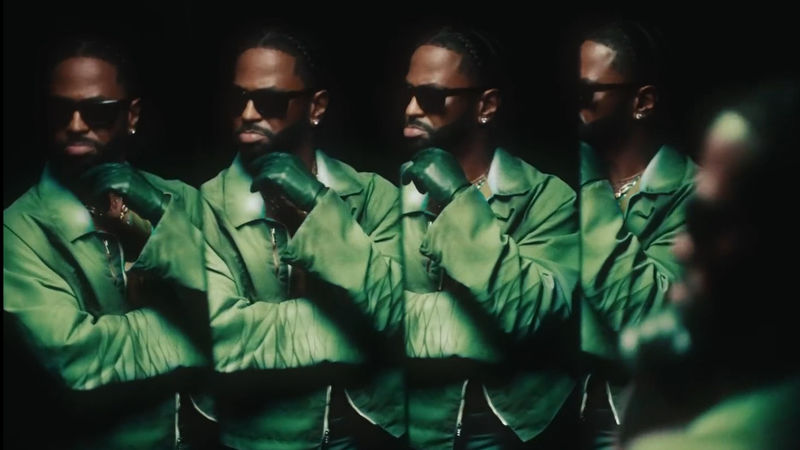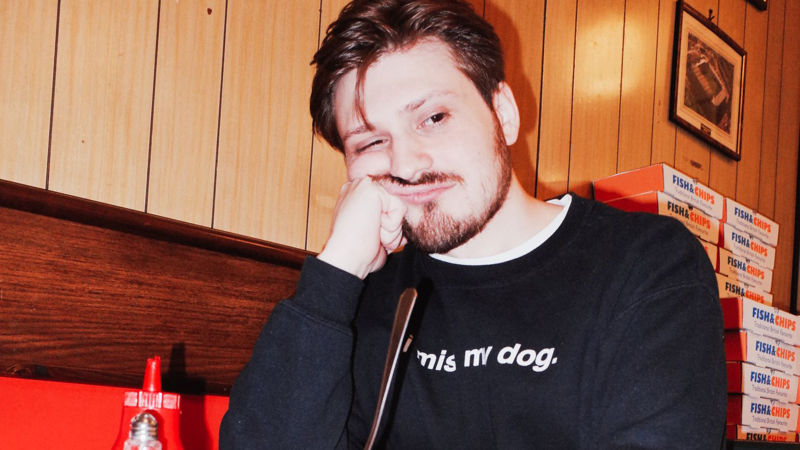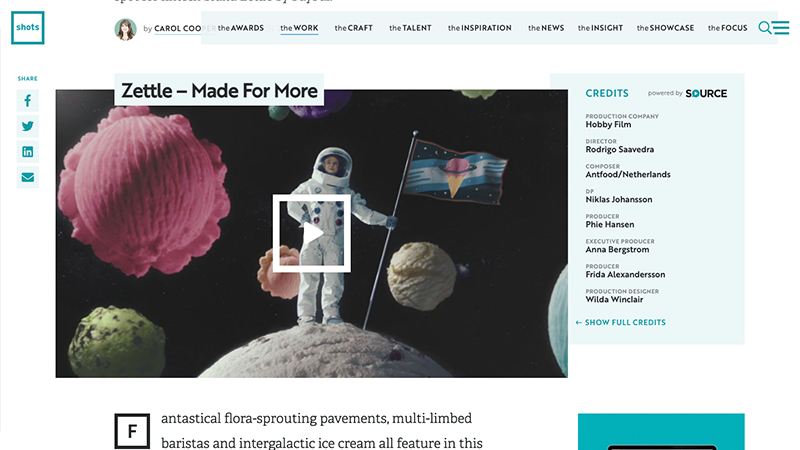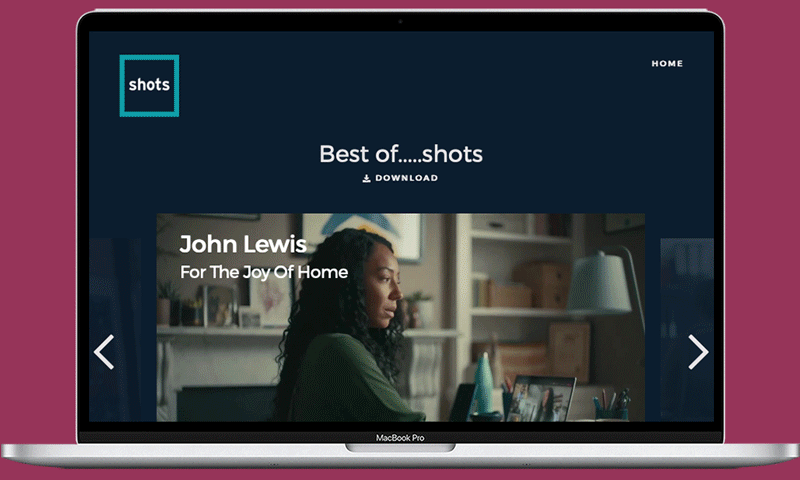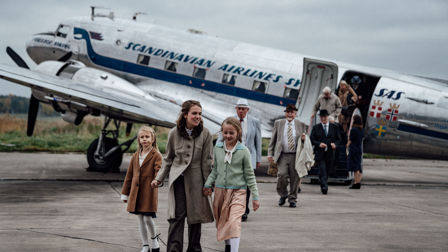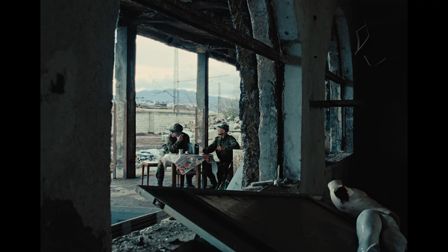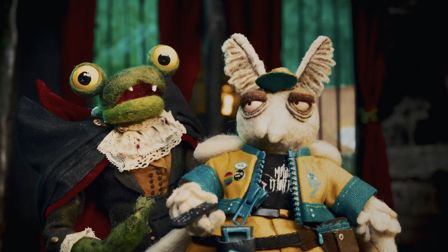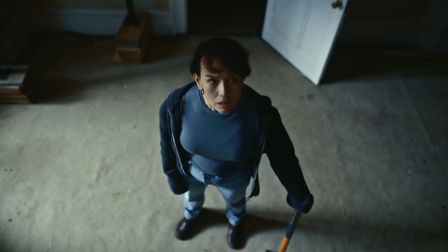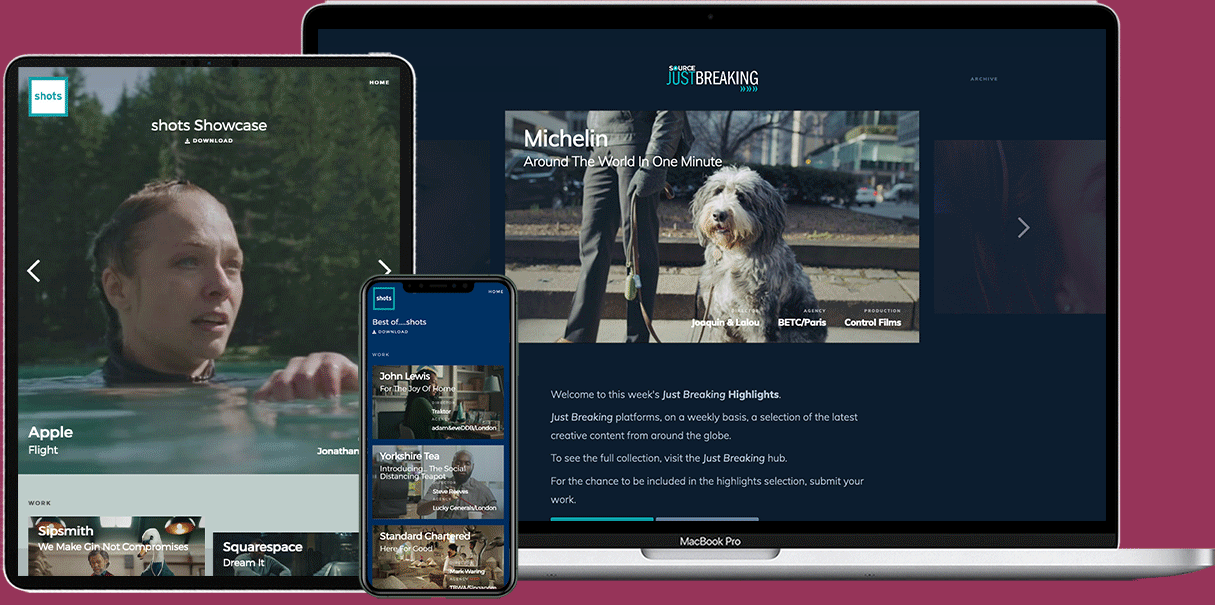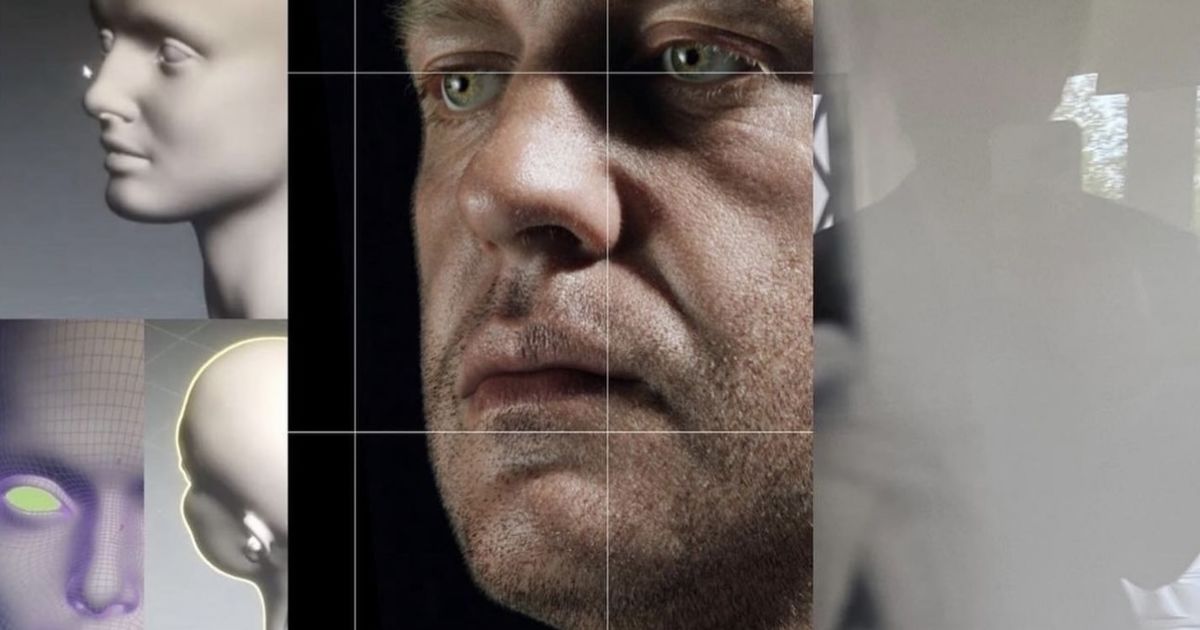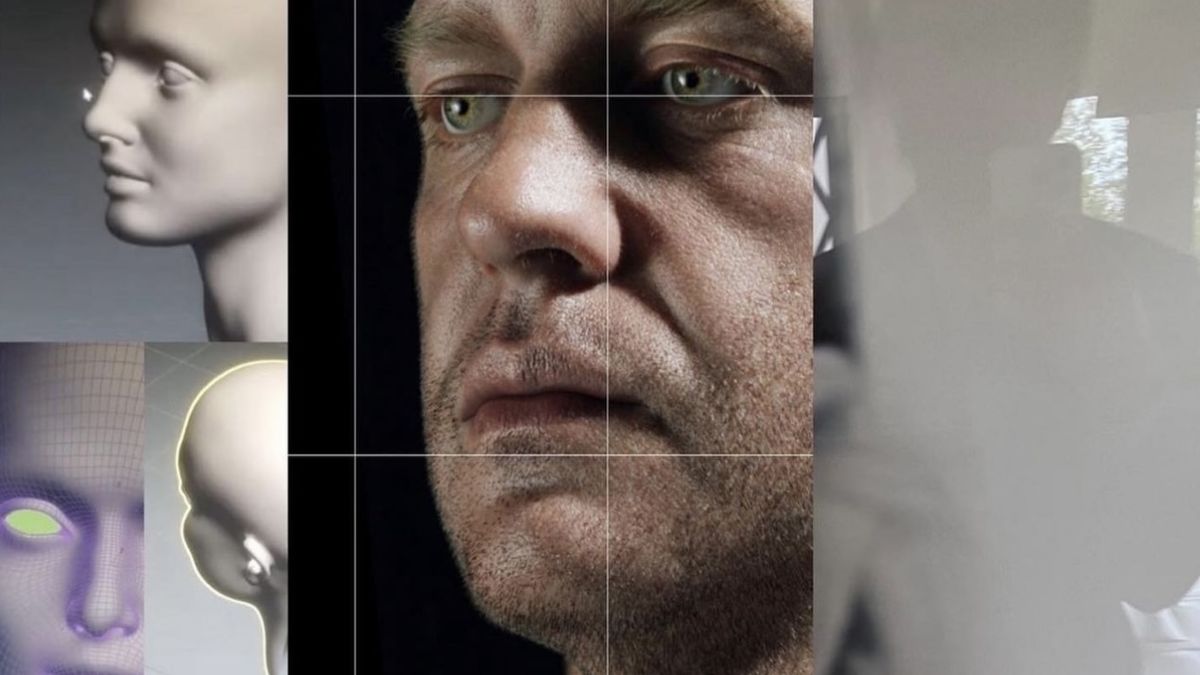Carl Erik Rinsch: finding the new tools of the trade
Since the turn of the century, Carl Erik Rinsch has worked at the pioneering edge of tech and creativity. Now the era of AI is upon us, he talks to Tim Cumming about technology, creativity, evolution and why nothing will be quite the same again.
If you’re calibrating levels of achievement, American director Carl Erik Rinsch more than measures up.
With Gold Lions, a Grand Prix and D&AD awards aplenty, and a spectacular reel of tech-fired spots for the likes of Mercedes, Lexus and Samsung under his belt, and as a protégé of sorts to Ridley Scott, he was the young director who guided Keanu Reeves down the samurai route for the high drama of his 2013 fantasy blockbuster 47 Ronin.
But there’s no resting on the laurels of success for Rinsch. The past is not his country. As we talk via Zoom, daylight fading to darkness over three hours of conversation, he spins a free-wheeling exploration of AI, tech, filmmaking, advertising – the tools of the trade – and how transformative he believes AI is going to be. Like the discovery of fire, he says.
I always had my finger on the pulse of technology, and how it was going to change the world.
It’s the present and the future that interests him; talking about his past is done at fast-forward speed. “I was born in LA and raised in LA, and travelled all over as a kid, and then I went to school at Brown University and at Columbia in NYC, and came back,” he says. “I was always making films when I was a little kid, and when I came back I started working straight away for Ridley Scott. That was my beginning.”
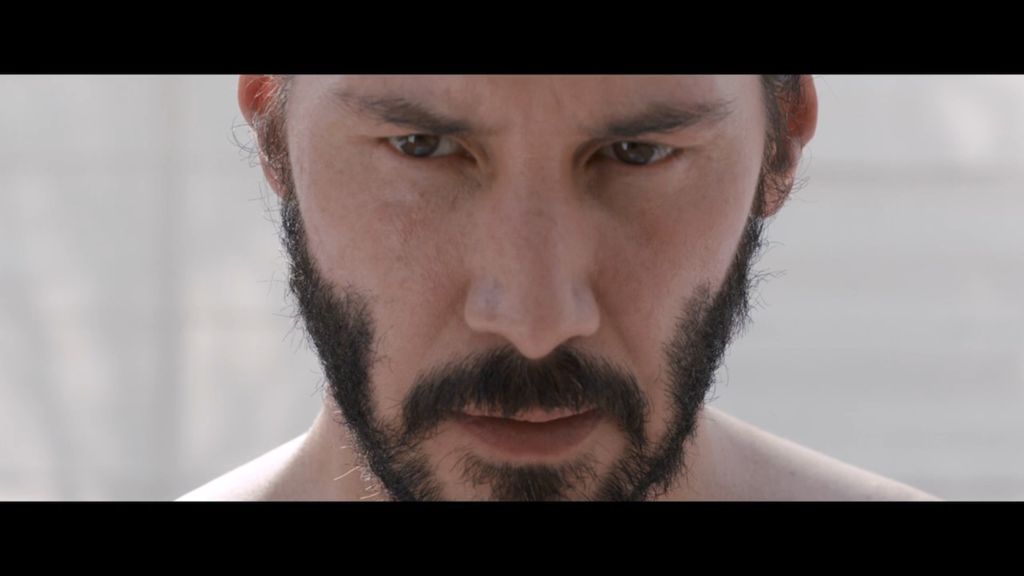
Credits
powered by
Above: The trailer for Rinsch's feature, 47 Ronin.
Under Scott’s guidance, he started as he meant to continue, playing about with the creative power of that era’s new tech and being a trailblazer. “One of the things that allowed me to succeed at a young age was that I always had my finger on the pulse of technology, and how it was going to change the world,” he says, “and then how it was going to change our ability to express things, which is the world as we now know it.”
This means, in today’s media landscape, he’s pioneer stock; an early adopter of 3D tech, creating characters, environments and animations in photorealistic CG. Fusing what he saw on the screen in his head with what he could do on screen in front of him. “Sometimes I’m inspired by an image,” he says of his creative process, “and I’ll ask, what was the story that brought that image to life, what preceded it, what’s going to happen in the building in the background. A lot of the time you’ll see something on the invisible screen in your head, and then you’ll need to render it, with a conceptual artist. Ridley is amazing at it. I learnt a lot doing that. Being able to articulate what you see on that invisible screen.”
[AI is] not an upgrade. It’s not Web 2.0. This is like the discovery of fire.
These weren’t necessarily outlandish sci-fi landscapes either, but ordinary domestic environments. “What do you think of my new dining room?” he’d ask friends, flashing up an image. Rinsch wanted to see if people could tell what was real and what was not. They couldn’t then, and as with the recent AI winner of the Sony World Photography Awards, they can’t now. “It will change the world,” insists Rinsch of AI’s sudden impact. “It’s not an upgrade. It’s not Web 2.0. This is like the discovery of fire.” And there’s no chance of putting it out. “Talking with futurists, I ask them, ‘what will it be like a few years out?’ Their answer is, we’re not going to be able to understand what it’s going to be like after five years.”
Credits
powered by
- Agency adam&eveDDB/London
- Production Company RSA Films
- Director Carl Erik Rinsch
-
-
Unlock full credits and more with a Source + shots membership.
Credits
powered by
- Agency adam&eveDDB/London
- Production Company RSA Films
- Director Carl Erik Rinsch
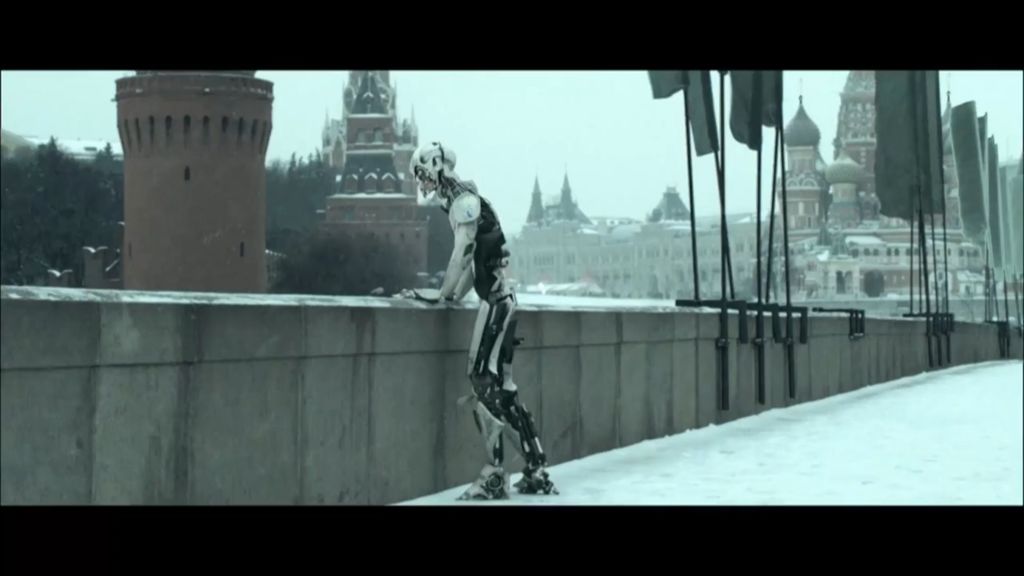
Credits
powered by
- Agency adam&eveDDB/London
- Production Company RSA Films
- Director Carl Erik Rinsch
Above: The Gift, Rinsch’s Cannes Lions Grand Prix-winning branded short for Philips.
Which may give rise to uneasy feelings. Rinsch’s advice is to accept them. “AI will be used to understand those things that make us human, that make us extraordinary,” he says. Good to know, but how it will work no one quite knows. “AI effectively is a black box technology,” says Rinsch, “and anyone who tells you they know how AI works are full of it. It will change the landscape not only of commercials and art forms, but of demography, human health, life expectancy, of how the body operates.”
Anyone who tells you they know how AI works are full of it. It will change the landscape not only of commercials and art forms, but of demography, human health, life expectancy, of how the body operates.
At the turn of the century, Rinsch was already pioneering game-changing new tech with cinematographer Claudio Miranda, becoming the first to shoot a commercial digitally. “It was a Lexus commercial,” he remembers. “Everyone was mortified. We had no idea what was going to come out of that camera.” It was what went in that mattered – a wider aperture of natural light in which to shoot, and to keep on shooting. Which meant Rinsch could shoot more, without truckloads of lights in tow. “So you could shoot in the real world with practical lighting and for longer – and it made it look gorgeous.”
The next step was to go out of the real world into the virtual. “We were one of the first people to do a full CG car,” he says. It was Lexus again, and again, there were jitters, misgivings, and another pioneering success story. “People would say: ‘It doesn’t really feel like it’s a real car, why are we not shooting the product?’ But certain scripts called for it, so that’s how we’d do it. Now they do it all the time.”
Credits
powered by
- Agency J. Walter Thompson/London
- Production Company MJZ/London
- Director Carl Erik Rinsch
-
-
Unlock full credits and more with a Source + shots membership.
Credits
powered by
- Agency J. Walter Thompson/London
- Production Company MJZ/London
- Director Carl Erik Rinsch
- Sr Producer Ben Catford
- Exec CD Russell Ramsey
- CD Jason Berry
- Sound Design Sam Ashwell
- Editor Ben McCambridge
- VFX Framestore/London
- DP Cory Geryak

Credits
powered by
- Agency J. Walter Thompson/London
- Production Company MJZ/London
- Director Carl Erik Rinsch
- Sr Producer Ben Catford
- Exec CD Russell Ramsey
- CD Jason Berry
- Sound Design Sam Ashwell
- Editor Ben McCambridge
- VFX Framestore/London
- DP Cory Geryak
Above: Shapeshifter for Shell, featuring a giant shapeshifting metal monster pursuing the car relentlessly.
Today, he believes, the lines dividing pre- from post-production and the shoot itself are being erased. “That’s dinosaur stuff,” he says. “I’m creating digital assets in pre-production and in post I’m redoing a lot of the work. It’s all becoming like one.”
While he’s been travelling worldwide and shooting on pretty well every continent for a new feature-length work about AI, he’s also signed up with Minted Content’s exclusive roster of talents. And while his feature debut came in 2013 with 47 Ronin, Rinsch sees such projects more as an extension of his way of storytelling on film, rather than as a major step-change.
“Most of the things I work on are of big scope, they’re luxurious, they’re luxury items,” he says. “The commercials I like to do are like small movies, with a beginning, a middle and an end. They have a point, a place they want to get you to, and in terms of quality, it’s the biggest bang not for your buck but for screen time. One minute will cost a million dollars, but I have a lot more time to work on a 60-second commercial. There are lots of similarities between features and commercials in terms of storytelling, design and instinct, so I didn’t find it that different.”
A commercial is like a gem. It has to be perfect, the colour, the cut, everything. Literally every single pixel has to be perfect, which is what I strive for.
He talks us through a handful of recent spots, including the remarkable Shell Shapeshifter, where the storytelling leaps into full-on out-of-this-world CGI mode, with a giant shapeshifting metal monster pursuing the car relentlessly. “A commercial is like a gem,” says Rinsch. “It has to be perfect, the colour, the cut, everything. Literally every single pixel has to be perfect, which is what I strive for.”
For the Shell spot, once he knew where he was going to shoot – in Latin America – Rinsch asked for an accurate CG model of the location to be built, and set about fusing the real and the rendered so no one could see the joins. “They create a CGI model of that environment, exactly as it is,” he says. “Now give us the car, put it on the road, so it’s the real car on the real road. Now render it out, cut it together and watch it.” Instead of pure CGI, the real and virtual worlds were fused seamlessly to make Shapeshifter feel so mightily real.
Credits
powered by
- Agency Saatchi & Saatchi/Milan
- Production Company The Family/Milano
- Director Carl Erik Rinsch
-
-
Unlock full credits and more with a Source + shots membership.
Credits
powered by
- Agency Saatchi & Saatchi/Milan
- Production Company The Family/Milano
- Director Carl Erik Rinsch
- Executive Producer/Partner Stefano Quaglia
- Post Production Exchanges
- Creative Director Maxi Itzkoff
- Creative Director Agostino Toscana
- Producer Tommaso Haimann
- Creative Director Nico Marchesi
- Head of TV Raffaella Scarpetti
- DP Cory Geryak
- Editor Vilma Conte
- Producer Erica Lora-Lamia
- Editor Luca Trivulzio
- Colorist Luca Parma

Credits
powered by
- Agency Saatchi & Saatchi/Milan
- Production Company The Family/Milano
- Director Carl Erik Rinsch
- Executive Producer/Partner Stefano Quaglia
- Post Production Exchanges
- Creative Director Maxi Itzkoff
- Creative Director Agostino Toscana
- Producer Tommaso Haimann
- Creative Director Nico Marchesi
- Head of TV Raffaella Scarpetti
- DP Cory Geryak
- Editor Vilma Conte
- Producer Erica Lora-Lamia
- Editor Luca Trivulzio
- Colorist Luca Parma
Above: Love for Toyota, a wholly human, intimate story about finding love amid the pressures of everyday life.
In contrast, Toyota Love is virtually CGI-free, a wholly human, intimate story about finding love amid the pressures of everyday life. “We shot that in Latin America, and there are hardly any visual effects, but I like to do it all – you can’t do VFX properly if you don’t know traditional filmmaking.”
You can’t do VFX properly if you don’t know traditional filmmaking.
VFX gets another free run at the screen on the audacious Evolution spot for German tech brand Saturn, its narrative sweep extending from the early stone ages through to an envisioned future with a modelesque she-bot named Blue slinking through a forbiddingly arid alien landscape.
“That was on the evolution of technology, how can you take evolution and apply it to tech,” Rinsch says. “What I wanted to do was keep it true to the idea, where you actually see a progression of technology, with the robot-generated voice reading from Darwin as we watch these creatures evolve. They wanted to get to the point where there’s a woman at the end of it,” he adds. “So that’s her birthing film.”
LG – Divide & Conquer
The Real Cost – Straw City
Above: More work from Rinsch's impressive showreel, including pieces for LG and public education campaign, The Real Cost.
As the light fades down on our remote conversation, Rinsch signs off with a few final thoughts on what he is sure is the biggest revolution of our lifetimes.
We’re going to be dealing with artificial people in artificial places and are going to have options unlike anything we have ever seen before,
“We have to realise and accept that we’re going to be dealing with artificial people in artificial places and are going to have options unlike anything we have ever seen before,” he says. “And it’s a reality you’re going to have to adapt to, and rather than fighting it like some old man screaming at the ocean.
"You need to accept it, and say, this is going to happen so what can I do with this? How can I affect the world and make it a better place? How can I express myself in a way I couldn’t do before? Or find out more about myself?”

